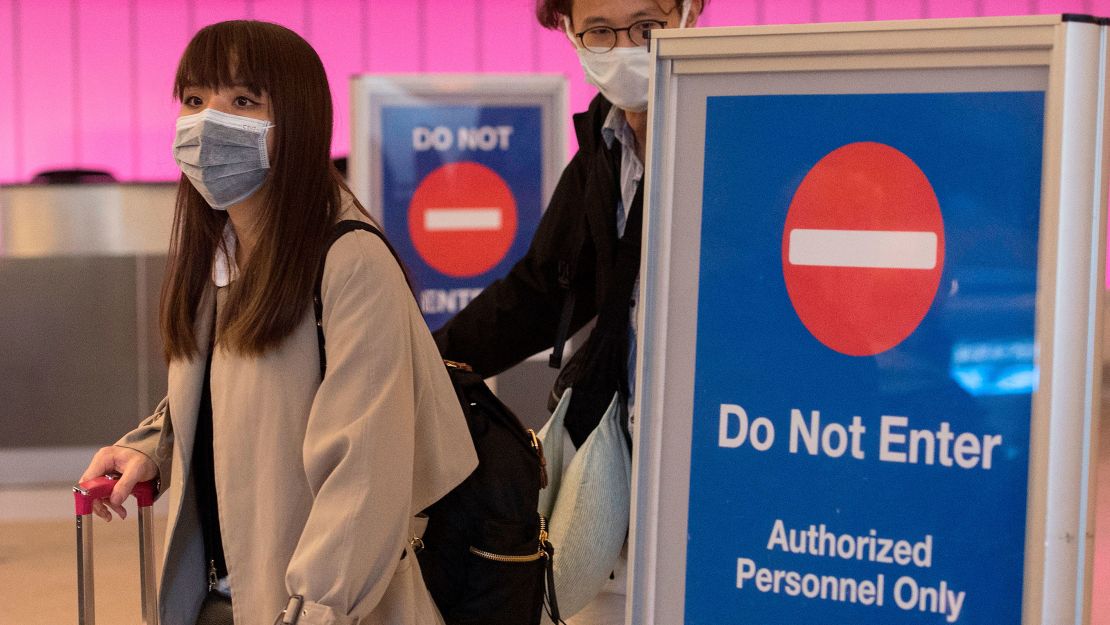What started as a mystery virus last month in Wuhan, China, has now killed more than 250 people and infected thousands more around the world.
In the United States, seven people have been infected – including patients in Washington state, Chicago, California and Arizona.
Most of the patients had recently traveled to Wuhan. But on Thursday, officials announced the first person-to-person transmission of the virus within the US.
So what are officials doing to avert a massive outbreak in the US? And how can you minimize your risk of getting infected?
What airports are doing
At several US airports, passengers are being screened for symptoms such as fever, cough and trouble breathing, the US Centers for Disease Control and Prevention said.

Those airports include John F. Kennedy International Airport in New York, Los Angeles International Airport, San Francisco International Airport, Hartsfield-Jackson Atlanta International Airport and Chicago O’Hare International Airport.
But these airport screenings might not catch everyone infected. That’s because the incubation period can last a week – meaning it can take a week after getting infected before showing any symptoms.
At Seattle-Tacoma International Airport, officials put up signs at the international arrivals area instructing travelers from Wuhan to watch for symptoms of the virus.
The CDC started displaying the signs in English and Chinese at the SeaTac airport January 14, one day before the first American patient of the Wuhan coronavirus passed through the airport.
What scientists are doing
Across the US, scientists are trying to create a vaccine for the new virus. But don’t expect it anytime soon.
The National Institutes of Health is working on one, but it will take at least a few months before clinical trials start and more than a year until a vaccine might actually become available.
Separately, scientists in Texas, New York and China are also trying to create on a vaccine, said Dr. Peter Hotez, a vaccine scientist at Baylor College of Medicine in Houston.
But the challenge is daunting.
“The lesson we’ve learned is coronavirus infections are serious and one of the newest and biggest global health threats,” Hotez said.
What you can do yourself
Avoid close contact with anyone showing symptoms of respiratory illness, such as coughing and sneezing, the World Health Organization says.
Other symptoms of this coronavirus include fever and shortness of breath. Severe cases can lead to pneumonia, kidney failure and even death.
Scientists believe this coronavirus started in another animal and then spread to humans. So health officials recommend cooking meat and eggs thoroughly.
Anyone with underlying medical conditions should avoid live animal markets and raw meats altogether, since those people are “considered at higher risk of severe disease,” the World Health Organization says.
But in general, the public should do “what you do every cold and flu season,” said Dr. John Wiesman, the health secretary in Washington state – where the first US case of Wuhan coronavirus was confirmed.
That includes washing your hands often with soap and water for at least 20 seconds.
If you’re the one feeling sick, cover your mouth and nose when you cough or sneeze, and disinfect the objects and surfaces you touch.
If you or your doctor suspect you might have the Wuhan coronavirus, the CDC advises wearing a surgical mask.
What the US is doing
The novel coronavirus is a public health emergency in the United States, said Alex Azar, secretary of the Department of Health and Human Services.
Once the health emergency declaration goes into effect at 5 p.m. ET Sunday, US citizens returning to the United States who have been in China’s Hubei province in the two weeks before their return will be subject to up to 14 days of mandatory quarantine, officials said Friday.
The development came a day after the State Department announced a highest-level warning urging citizens not to travel to China due to the outbreak.
Also Thursday, the CDC said the husband of an Illinois woman with Wuhan coronavirus is infected with the illness – the first confirmed case of person-to-person transmission in the United States.
Chinese officials have scheduled a public transportation lockdown for the city’s buses, ferries and subways. Airport and rail stations have been temporarily closed for departing passengers, Wuhan authorities said.
For those who traveled to China in the past two weeks and have symptoms such as fever, cough or trouble breathing, the agency recommends seeking immediate care, avoiding contact with others, not traveling and practicing good hygiene.
“At this time, it’s unclear how easily or sustainably this virus is spreading between people,” the CDC said.
What to do if you’re planning to go to China
This virus is spreading at the worst possible time of the year – when millions of people are traveling to or within China for Lunar New Year celebrations.
Chinese New Year started last Saturday, but festivities can last for two weeks and often include family rituals that are supposed to ensure a successful year.
While the CDC’s travel warning for Wuhan is a Level 3, the travel alert level for the rest of China is at Level 1– which means “practice usual precautions.”
But Americans visiting friends and family in China might be at greater risk than tourists.
“Their risk is higher because they generally stay longer than tourists, eat local food in people’s homes, and may not take the same precautions that tourists do,” the CDC said.
Before traveling, the CDC recommends visiting a health care provider to make sure you have all necessary vaccinations and travel medication.
Americans should also register trips with the US Embassy or consulate.
CNN’s Michael Nedelman, John Bonifield and Jen Christensen contributed to this report.
























